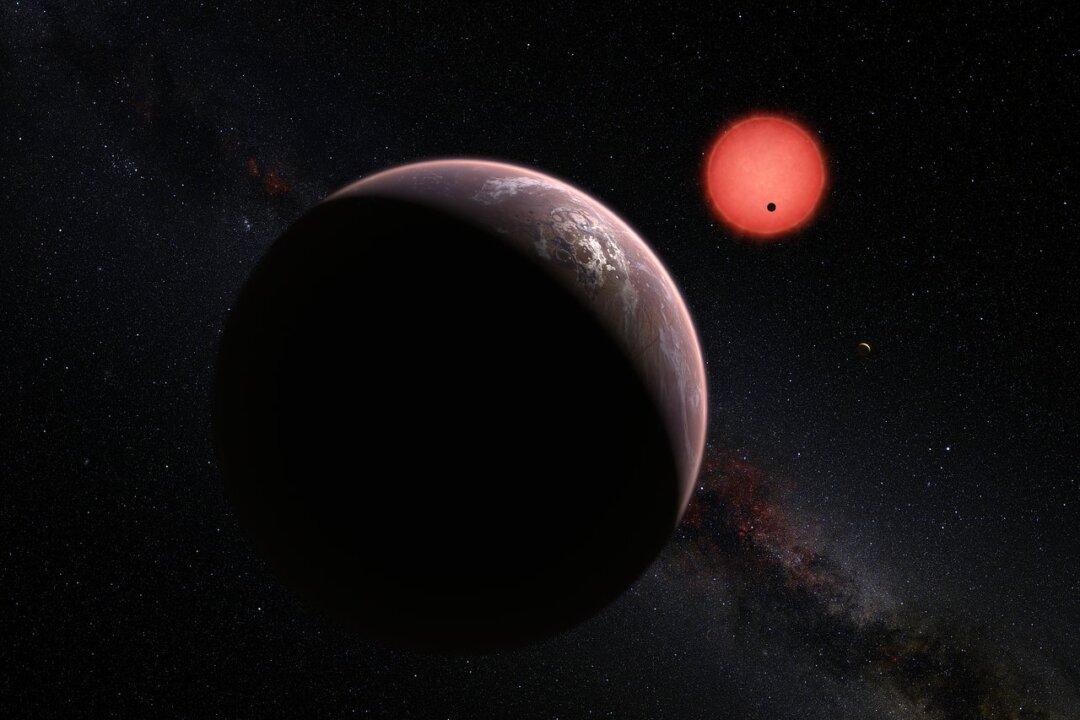Three planets, that have just the right temperatures to possibly support life as we know it, have been discovered. The trio orbit a star 40 light years away and are much cooler and dimmer than our sun, researchers say.
The planets are about as big as Earth. One is four times warmer than Earth, one is two times warmer, and one is cooler than Earth. But all of them may still have areas where water exists in liquid state—what scientists consider a prerequisite for development of life similar to that found on Earth.
The star is an ultra-cool dwarf in the constellation of Aquarius about eight times smaller than the Sun and much cooler. That makes it easier to detect potential life on its planets, as opposed to brighter stars that can overpower signals coming from their planets.






